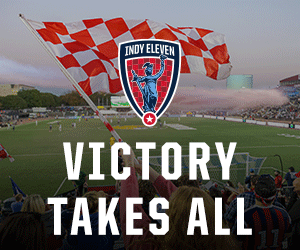By Thresette Briggs
Today’s human resource department is much different than the personnel department of long ago, when it was once relegated to more administrative work in addition to hiring and firing employees.
Now, more than ever, businesses are seeing the value human resource leaders can bring to the table. Today’s human resource professionals are seen more as strategic business partners, helping to set company goals and establish partnerships to achieve them. As the field has changed, so have the people who work in it.
Women now hold 70 percent of the human resource jobs, according to Forbes. Other research supports that number. Research from the United States Office of Personnel Management showed that, in 1969, women occupied 30 percent of the jobs in human resources. By 1998, the numbers were flipped: Men held 29 percent of those jobs, and women held 71 percent. Similar research from the Society for Human Resource Management also has revealed similar numbers.
In my experience working with large companies and organizations, there have always been more women than men in human resources. And my experience in teaching human resource courses for the past six years has supported that, as I’ve seen more women than men in my classrooms. I think the reason could be the competencies that are required of today’s human resource professionals. While human resources is no longer just a tactical “hire and fire” field that administers benefits and payroll, the competencies it often requires — nurturing and developing talent, collaboration, building teams and a high degree of emotional intelligence — are often thought of as occurring more naturally in women. But there are other competencies required for the future that people in human resource need to have — such as strategic positioner, change champion, credible activist, capacity builder and integrator and innovator — that make great human resource leaders.
In my experience, not only could there be more men in human resource, but overall diversity could be improved, including race and other diversity dimensions. From what I have seen in my classes, there is a shortage of men interested in the field, although there’s no shortage of minorities interested. Awareness of this is really key, because building a diverse human resource department is important to building a diverse workforce. And while gender and race diversity can be improved in human resource, they, along with other diversity dimensions, could be improved in almost every area of most organizations.
Human resource and diversity leaders are important to the health of an organization, because they help build a culture that supports inclusion of differing people, viewpoints and perspectives. This leads to healthier, more innovative strategy development and progress that supports company growth. After all, if everyone is the same and has the same ideas, there is no energy to fuel change. That is not how a company grows, changes and becomes more successful.
Companies also need to make sure their workforce — in the human resource department and throughout — reflects its customer base. In other words, an organization needs to look like its customers, to the extent that is possible. If a company sells shoes to a certain demographic, then the company should have employees who are similar to that demographic. The customers are then more likely to see the company as credible and believe it is walking the “diversity” talk.
Continuous improvement in the human resource department requires a strong diversity commitment from top leadership to attract, retain and promote the best. So it’s critical that human resource and diversity leaders are engaged in developing recruiting and selection strategies to attract diverse talent. And doing so might include
using a wide range of sources that haven’t been tried. But again, it will take commitment from that company. In the end, it could also help increase the population of men in human resources, bringing even more balance to the team.
The great thing is there has never been a better time to work in human resources. The challenges are high — with a shortage of skilled workers, an aging baby boomer workforce, an increasing number of millennials in the workforce and generation Z entering the workforce, as well as the high cost of health care all stressing companies. Yet smart companies recognize that human resource professionals can help with those challenges through strategic planning, change leadership and leadership and talent development strategies. That’s when human resource professionals need to be at the table.
Individuals who want to be that human resource leader with the competencies required today should consider the opportunities that exist in human resources. They will definitely have the chance to use them, develop professionally and, therefore, advance at faster rates. That is, of course, if the companies bring them to the table and provide opportunities for them to use the competencies. And, conversely, human resource professionals should not wait to be asked to the table. They should take the initiative to ask other leaders in the organization what it is they need from them. They should start the dialogue and collaborate as much as possible.
Thresette Briggs, MBA, SHRM-SCP, DDI, CPS, is an adjunct professor in the College of Adult and Professional Studies at Indiana Wesleyan University, where she teaches classes in business and human resource in the DeVoe School of Business. She is also president of Performance 3 LLC, a management consulting firm that provides coaching, speaking and training services to help global talent achieve high performance.










